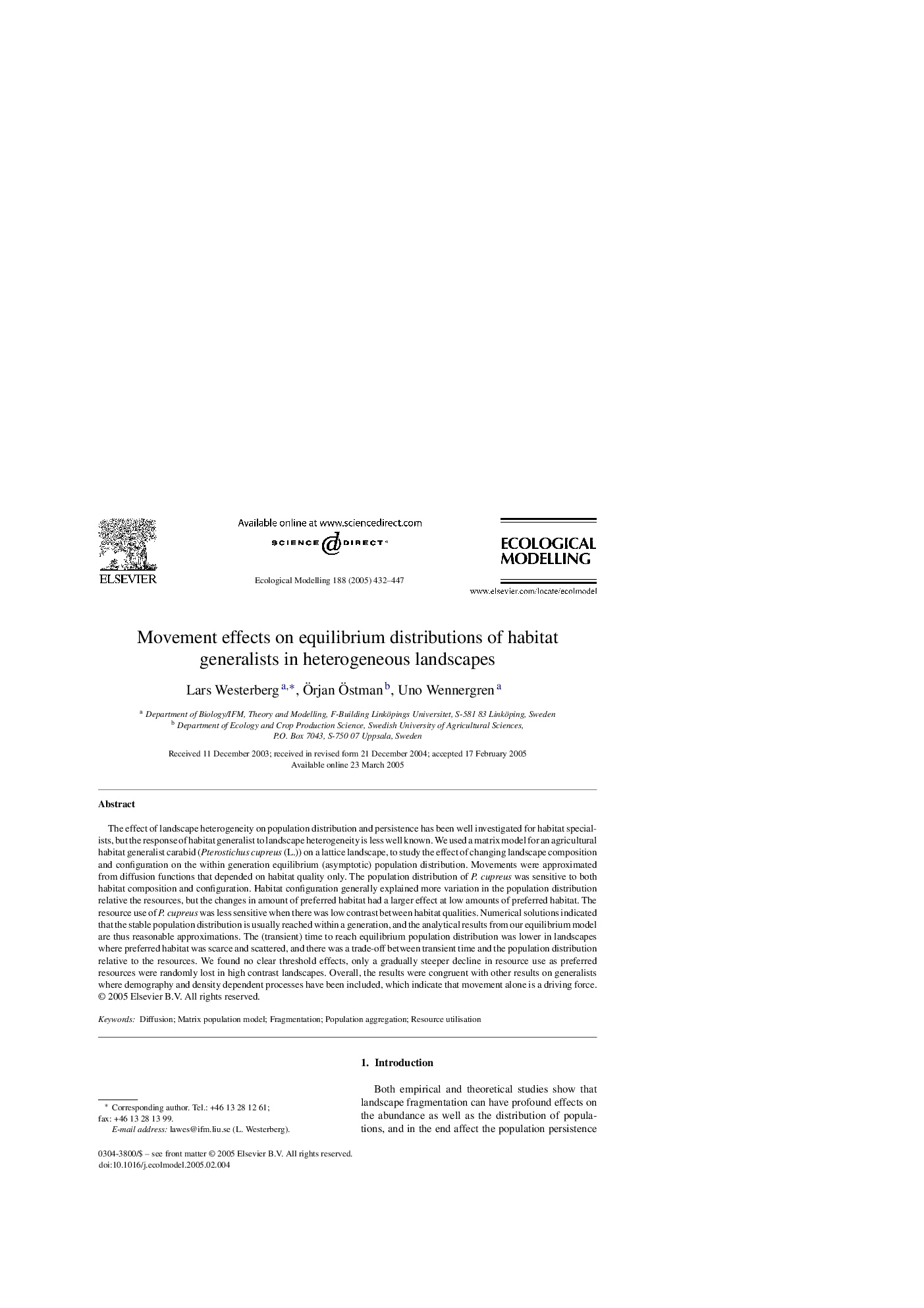| Article ID | Journal | Published Year | Pages | File Type |
|---|---|---|---|---|
| 9443527 | Ecological Modelling | 2005 | 16 Pages |
Abstract
The effect of landscape heterogeneity on population distribution and persistence has been well investigated for habitat specialists, but the response of habitat generalist to landscape heterogeneity is less well known. We used a matrix model for an agricultural habitat generalist carabid (Pterostichus cupreus (L.)) on a lattice landscape, to study the effect of changing landscape composition and configuration on the within generation equilibrium (asymptotic) population distribution. Movements were approximated from diffusion functions that depended on habitat quality only. The population distribution of P. cupreus was sensitive to both habitat composition and configuration. Habitat configuration generally explained more variation in the population distribution relative the resources, but the changes in amount of preferred habitat had a larger effect at low amounts of preferred habitat. The resource use of P. cupreus was less sensitive when there was low contrast between habitat qualities. Numerical solutions indicated that the stable population distribution is usually reached within a generation, and the analytical results from our equilibrium model are thus reasonable approximations. The (transient) time to reach equilibrium population distribution was lower in landscapes where preferred habitat was scarce and scattered, and there was a trade-off between transient time and the population distribution relative to the resources. We found no clear threshold effects, only a gradually steeper decline in resource use as preferred resources were randomly lost in high contrast landscapes. Overall, the results were congruent with other results on generalists where demography and density dependent processes have been included, which indicate that movement alone is a driving force.
Related Topics
Life Sciences
Agricultural and Biological Sciences
Ecology, Evolution, Behavior and Systematics
Authors
Lars Westerberg, Ãrjan Ãstman, Uno Wennergren,
